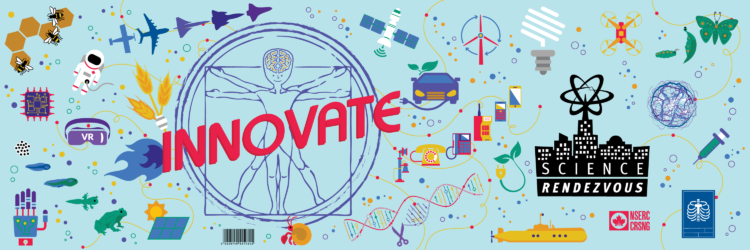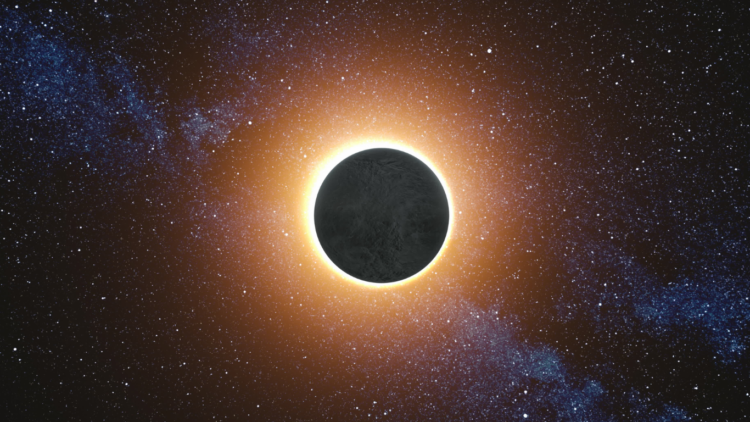Lesley Hymers, Mining Matters
Experiment
How do Earth Scientists experiment?
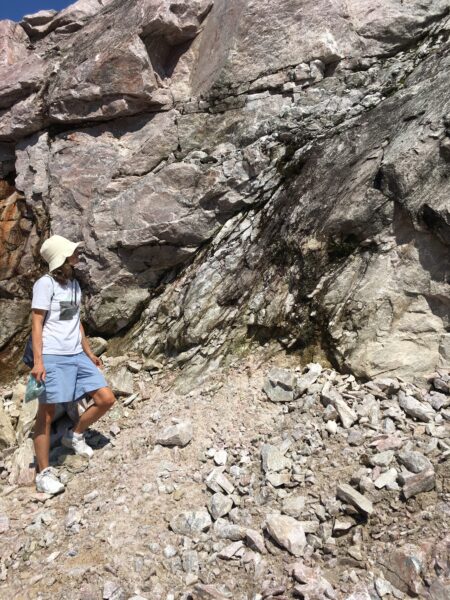
Earth Scientists gather data in the field and laboratory and use the scientific method to answer questions and draw conclusions about what they observe and record.
A Mineralogist could be working “in the field” where they observe a rock outcrop and see mineral crystals. Then, they might ask, “Are these evaporite minerals, which are formed when saltwater or freshwater evaporates?”
This question could be answered through a step-by-step process that includes gathering and analysing data. First, the Mineralogist would form a potential answer based on their observations and research, which scientists call a hypothesis. In this example, the hypothesis would be that the mineral’s crystals are formed by evaporation.
Next, the Mineralogist would test to see if their hypothesis is true or false through more research and experimenting with the minerals. They’d collect and examine samples of the minerals and review existing research.
So let’s get to experimenting!
Grow Your Own Crystals
Grow your own crystals out of table salt! Table salt is the chemical, sodium chloride (NaCl) and its evaporite mineral form, is called Halite. Remember, evaporite minerals form in nature when saltwater or freshwater evaporates. For more experimenting fun, experiment with different types of halite, such as rock salt or sea salt, and other mineral solutions (minerals dissolved in water) so you can compare and contrast the different crystal shapes! You can use Epsom Salts (Magnesium Sulfate, Borax (Sodium Tetraborate), and Alum (Potassium Aluminum Sulfate). You’ll see that the different salts will result in different shapes but the crystals from the same mineral solution will have the same structure.
What do you need?
-

Water (distilled, if possible)
- A small cooking pot
- Hot plate or stove
- Table Salt
- Other minerals (optional) such as Epsom Salts, Borax and Alum
- Scissors
- Two clear cups, shallow dishes, or canning jars
- Food colouring (optional)
- Dark construction paper
- Lined paper or booklet ot record your observations
Safety first!
Be careful using the stove or hot plate and scissors, and when handling hot solutions – please make sure an adult is supervising or handling these items. Food colouring may stain hands, clothings and containers. Do not ingest the solutions.
What do we do?
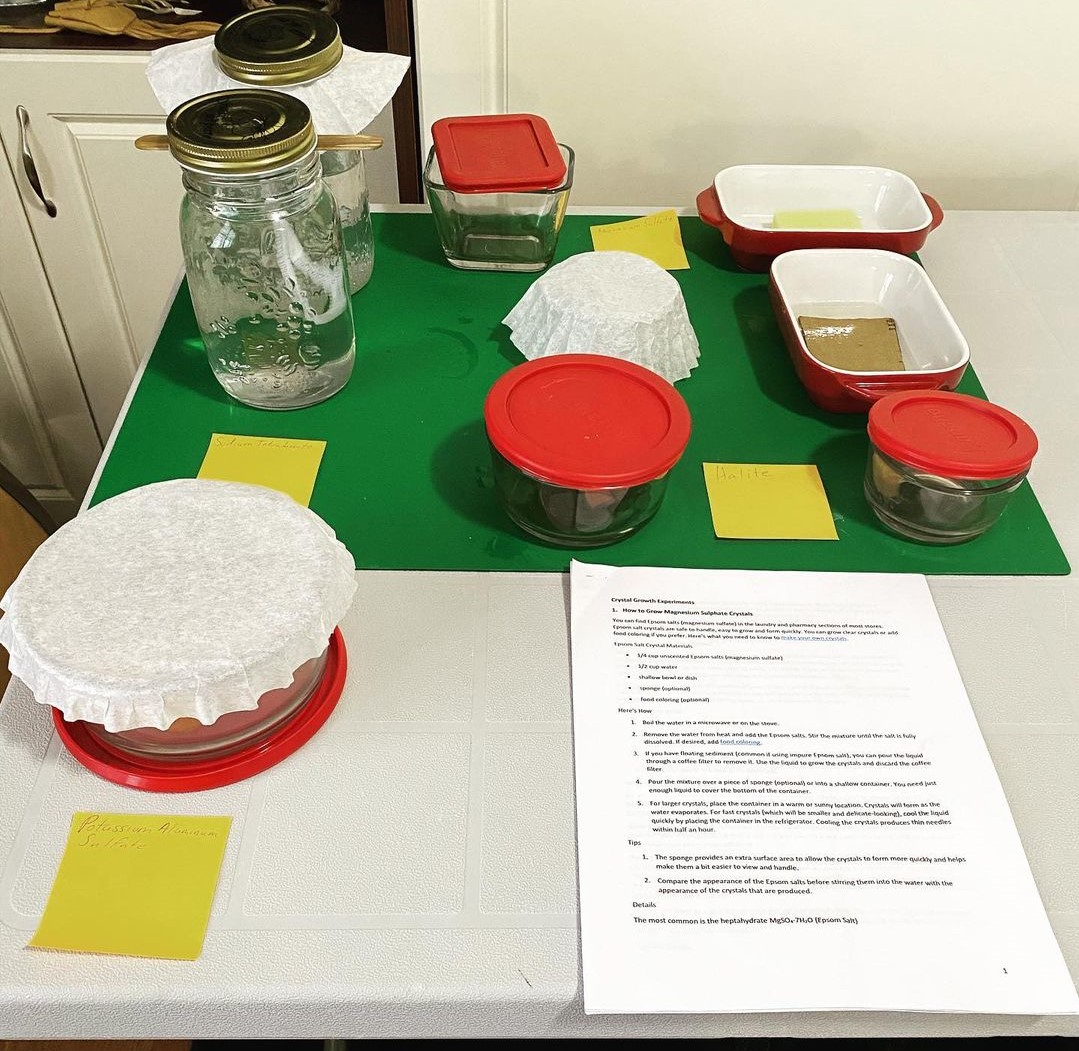
- Cut the construction paper so that it fits in the bottom of the cup or dish
- Place the construction paper beneath the cup or dish
- Label each cup or dish with the name of the mineral solution
- Find a location where the cups or dishes can be left undisturbed for several days
- Fill the cooking pot approximately half way with water
- Set it on the stove to boil
- Gradually add salt to the boiling water
- Continue to add salt until the solution is “saturated” (i.e., no more salt will dissolve)
- Add a drop of food colouring if desired
- Carefully pour a small amount of the solution into the cups or dishes. The solution should be no more that a few millimeters in depth.
- Complete steps 5 – 9 for any of the other mineral solutions
- On your lined paper or in your booklet create an observation table to record the results of your experiment. Record information like the mineral that was used to create the solution, the number of days that it took for crystals to form, the shape of the crystals that formed, and anything else that you think is important.
- Take a photograph of your experimental setup
- Leave the cups or dishes untouched until all the liquid has evaporated
- In your observation table, record the process of crystal growth during this time. Take a look at the sample observation table below.
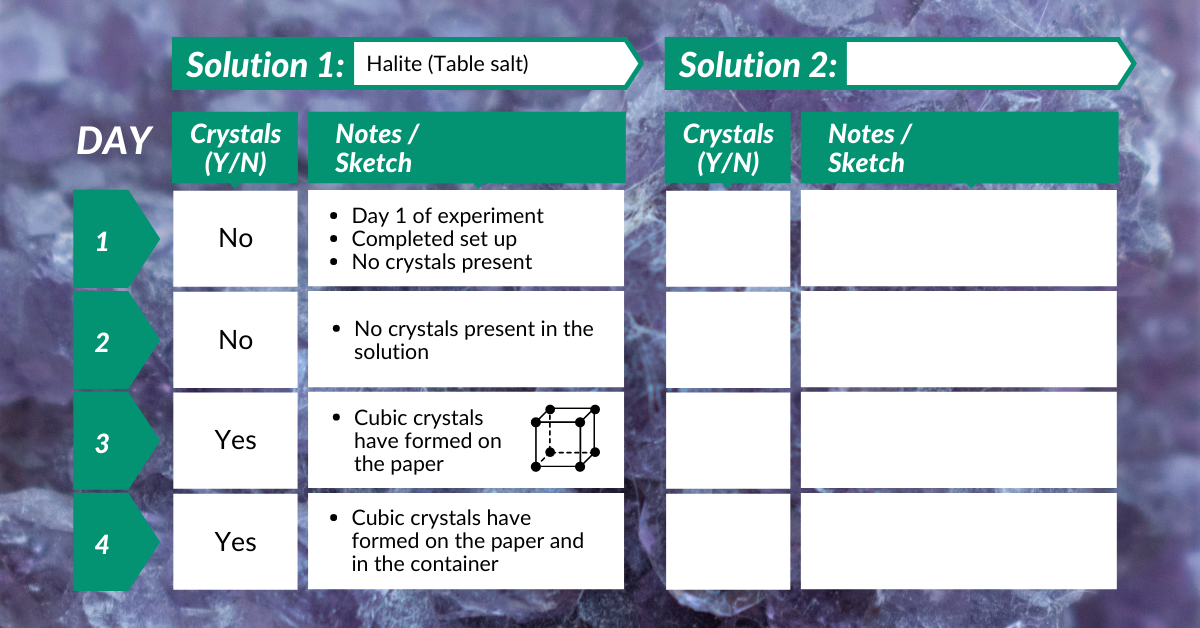
 Analyze
Analyze
After going through all the tests and research, the Mineralogist would come to a conclusion on if their hypothesis is true or false after analyzing them. For this experiment, analyze your observations and results with these questions:
- How long did it take for crystals to form?
- What shapes are the crystals?
- How did adding food colouring affect the crystals?
- Do you think the method you used in your experiment is similar to how halite, or other evaporite minerals, actually form on Earth?
- What role did the construction paper play in the experiment?
- If you haven’t tried the experiment using other mineral solutions, do so and then compare and contrast the shapes of the crystals that are formed.
So what is an Earth Scientist?
You did it – you thought like an Earth Scientist! But what is an Earth Scientist?
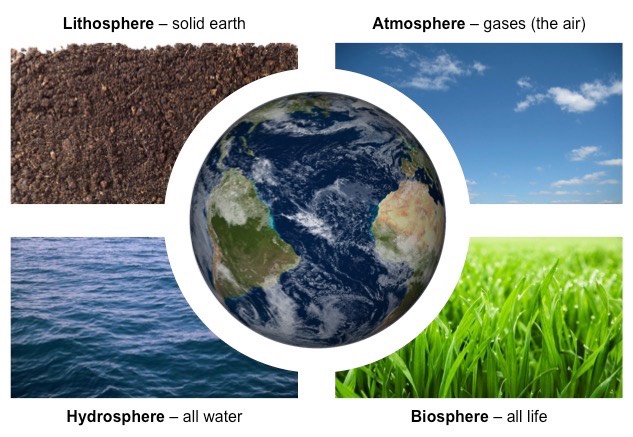
Earth Science is the science of the planet Earth. It involves the study of the four spheres of the planet:
- The atmosphere: the layer of gases that surround our planet
- The biosphere: the places on the planet where life exists
- The hydrosphere: the liquid water, solid water and water vapour that is found on, under, and above the surface of the planet
- The lithosphere: the hard outer layer of our planet.
Earth Scientists work in the field, in laboratories, in offices, and around the world. They use physics, chemistry, biology, and mathematics to understand how the Earth works, and how it has changed over time into the planet that we see today. That’s why Earth Science is so important – it helps us to understand the place where we live and affects our daily lives.
Earth Scientists think about important issues like finding groundwater, understanding earthquakes and volcanoes and how to protect against their effects, reducing impacts to the environment, and finding and sustainably using minerals and energy. If any of this sound interesting, you should think about becoming an Earth scientist!
Share
The work of Earth Scientists helped us understand so much more about many Earth processes, including those involving minerals. We have identified more than 5000 different minerals, 80 of which are evaporates, through observations in the field and experiments in the laboratory! Share the results of your experiments with your classmates, friends and family. Share them on social media and tag @sci_rendezvous and Mining Matters (Twitter, Instagram)!
Images ©Lesley Hymers or sourced from http://skywalker.cochise.edu/wellerr/mineral/halite/haliteL.htm and https://easyscienceforkids.com/crystals-worksheet-earth-science-word-searches-for-school-kids/


 Analyze
Analyze